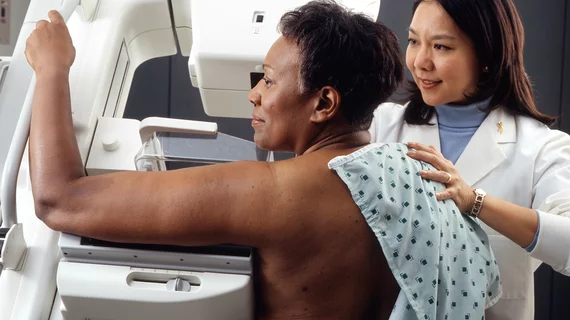Routine mammograms offer insight into women's risk of cardiovascular disease
Could mammograms provide clues into a woman’s risk or developing cardiovascular disease? According to new research published in Circulation: Cardiovascular Imaging, yes, they can.
The research used mammography screenings from more than 5,000 women to analyze whether breast arterial calcifications (BACs) visualized on imaging had any associations with atherosclerotic cardiovascular disease (ASCVD).
“Currently, it is not the standard of care for breast arterial calcification visible on mammograms to be reported,” explained lead author of the study Carlos Iribarren, MD, research scientist at the Kaiser Permanente Northern California Division of Research in Oakland, California. “Some radiologists do include this information on their mammography reports, but it’s not required.”
To examine the relationship between BAC and ASVCD, the researchers narrowed their subset down to 5,059 women aged 60-79 with no documented history of cardiovascular disease or breast cancer. BAC presence and quantity with hard ASCVD and global CVD was assessed on all exams. Researchers tracked the patient’s health via EHR systems for an average of 6.5 years to assess whether the women developed cardiovascular disease or experienced major cardiovascular events, such as strokes or heart attacks.
A total of 155 ASCVD events and 427 global CVD events were identified during the research. The presence of BAC was detected in 26% of women. Compared to the women without BAC, patients with the arterial calcifications were 51% more likely to develop heart disease or have a stroke, and 23% more likely to be diagnosed with any cardiovascular disease, including heart disease, stroke, heart failure and diseases of the peripheral arteries.
“We hope that our study will encourage an update of the guidelines for reporting breast arterial calcification from routine mammograms,” Iribarren said. “Our study has moved the needle toward recommending routine assessment and reporting of breast arterial calcification in postmenopausal women.”
Iribarren noted that women aged 50-74 are currently recommended to have routine mammogram screenings every two years, so the added clinical information provided when BAC is reported comes with additional diagnostic information only, not additional expenses.
You can view the detailed research in Circulation: Cardiovascular Imaging, which is a journal of the American Heart Association.
More breast imaging content:
Mayo Clinic offers new guidance on supplemental screening of women with dense breasts
VIDEO: Should women wait to get mammograms after COVID vaccination?
Breast cancer is overdiagnosed in 15% of screenings
New research can help radiologists manage architectural distortion identified via DBT exams

